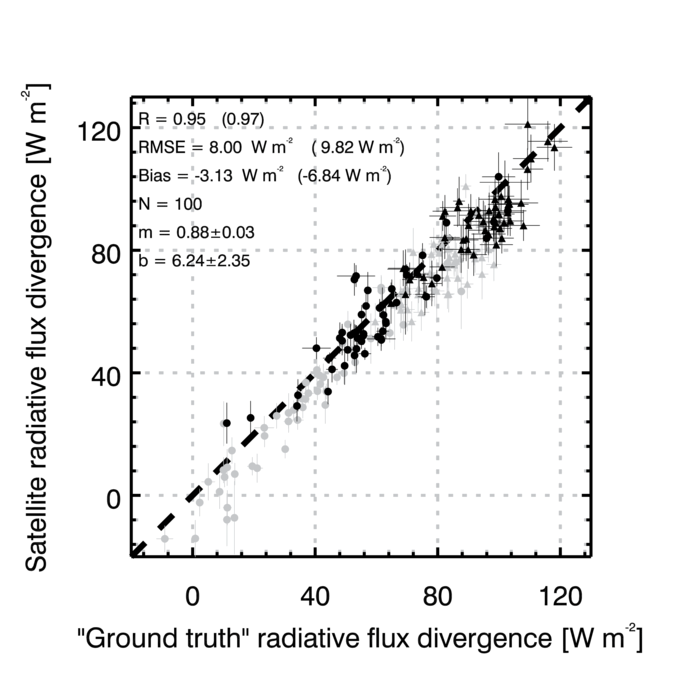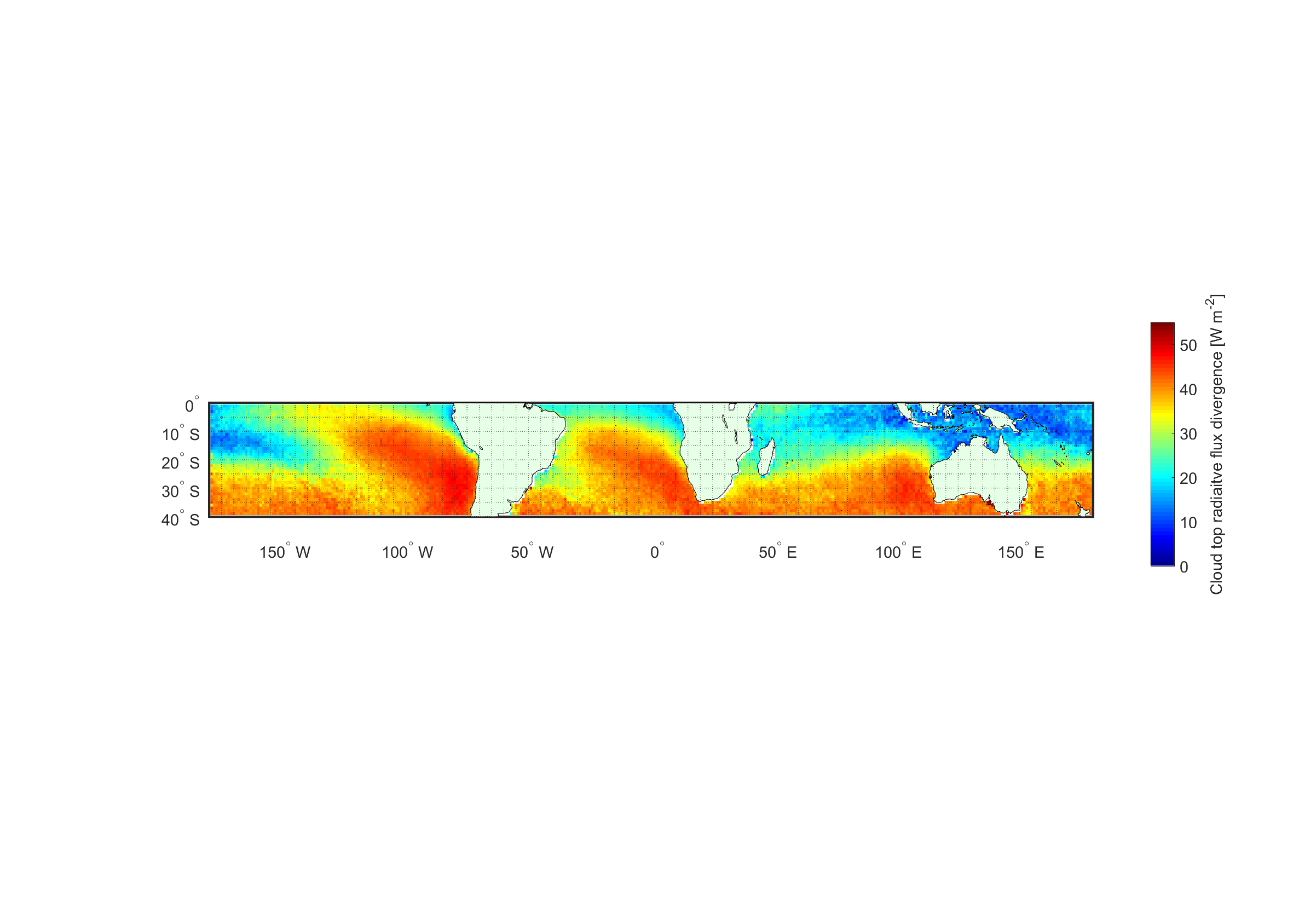Retrieving cloud-top radiative cooling for stratocumulus from space
Submitter:
Zheng, Youtong — University of Houston
Li, Zhanqing — University of Maryland
Area of research:
Radiation Processes
Journal Reference:
Science
We develop a new algorithm for estimating the cloud-top radiative cooling rate (CTRC), the rate at which marine clouds radiate energy, from space.
Impact
Cloud-top radiative cooling (CTRC) has been considered as the fundamental driver of dynamics of marine low-lying clouds. Despite its importance, CTRC has been notoriously difficult to measure, in particular from a satellite, the only practical way to offer global coverage. This study fills this gap by developing a new satellite-based method for estimating the CTRC.
Summary
This study demonstrates the feasibility of estimating the CTRC, with high accuracy, from passive satellite data only. The estimation relies on a radiative transfer model with inputs from satellite-retrieved cloud parameters in combination with reanalysis sounding that is revised, in a physically coherent way, by satellite data. The satellite-based estimates of CTRC agree with ground-based ones to within ~ 10%. The high accuracy largely results from the good capability of satellite data in constraining parameters of most influence to the CTRC such as free-tropospheric sounding, cloud-top temperature, and cloud optical depth. Applying this technique, we generate a climatology of CTRC during summer over the Southern Hemisphere tropical and subtropical oceans.



